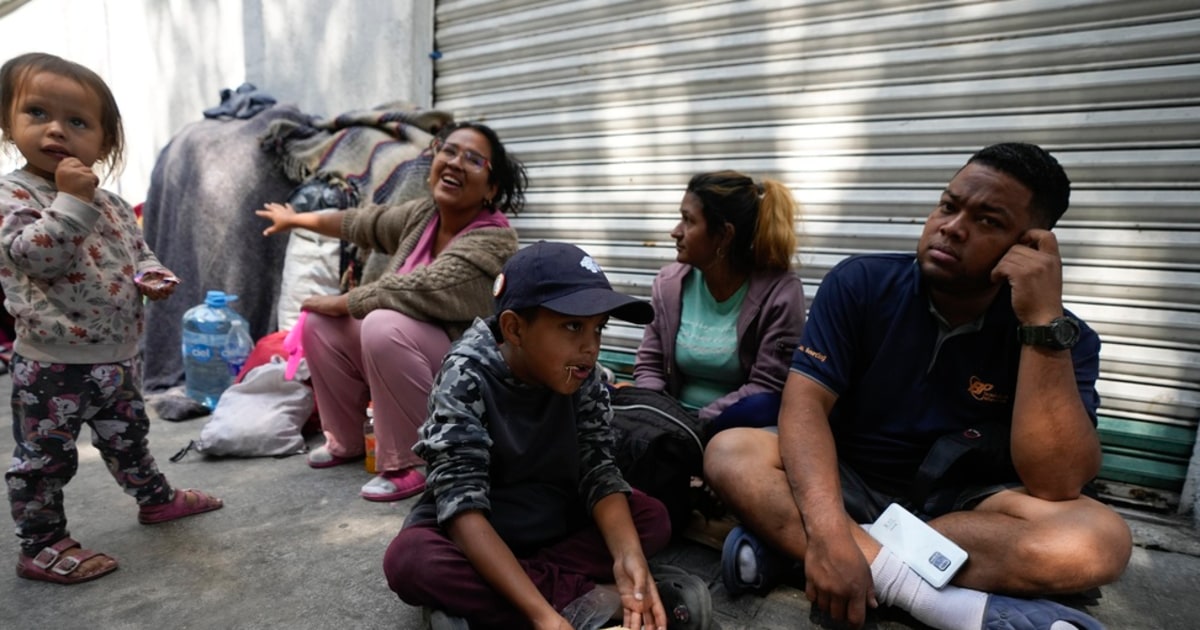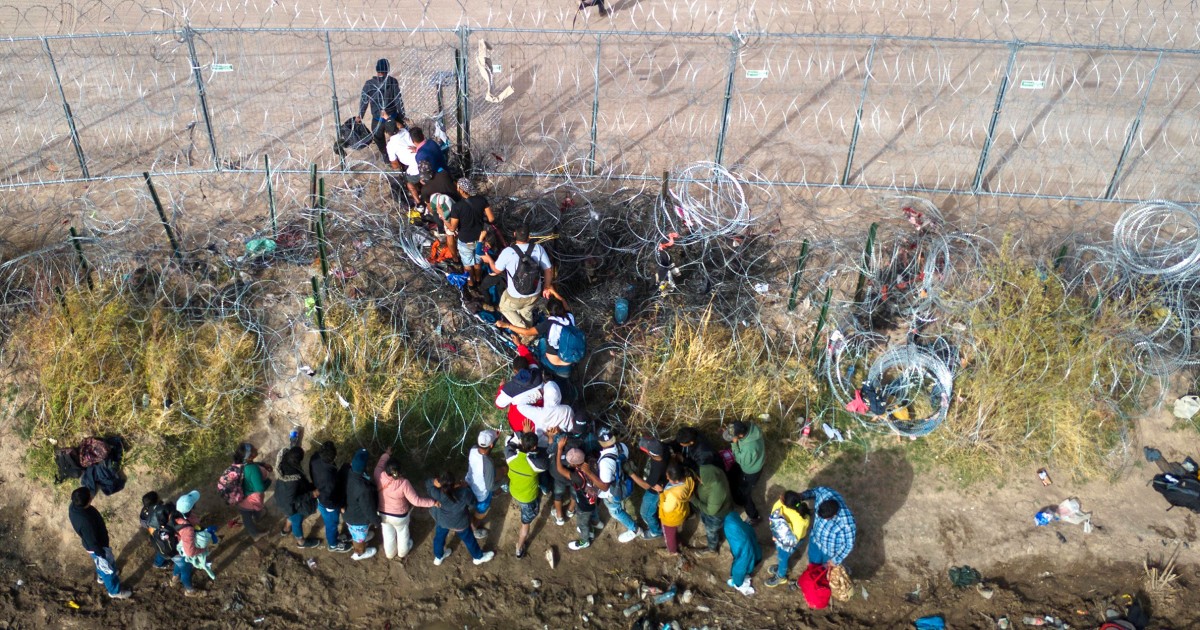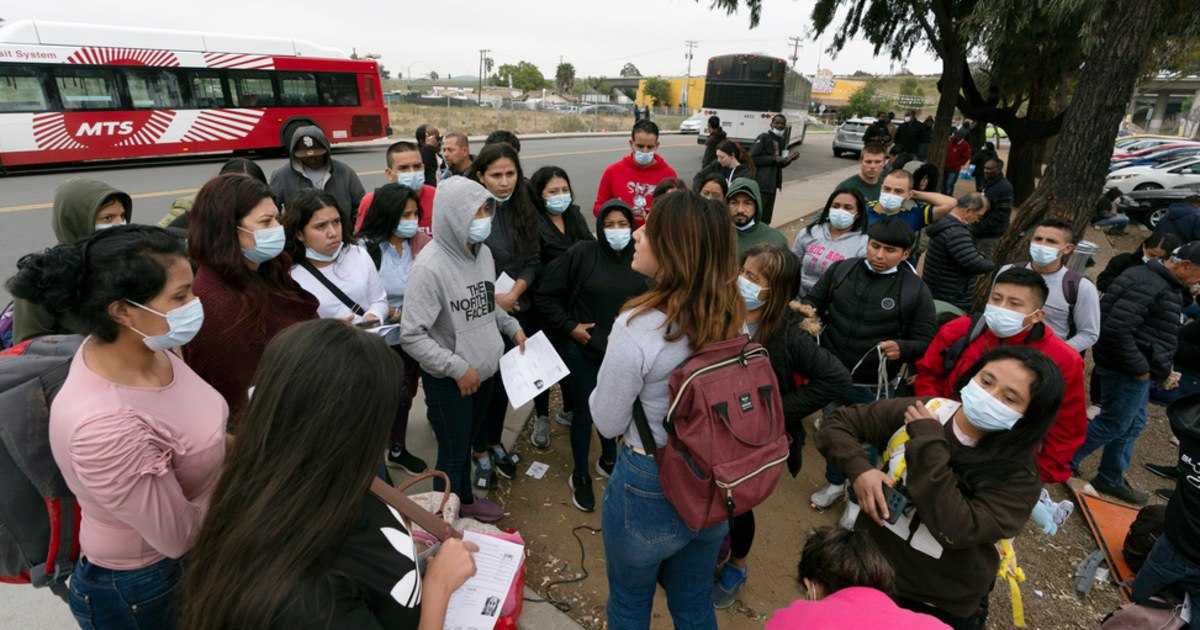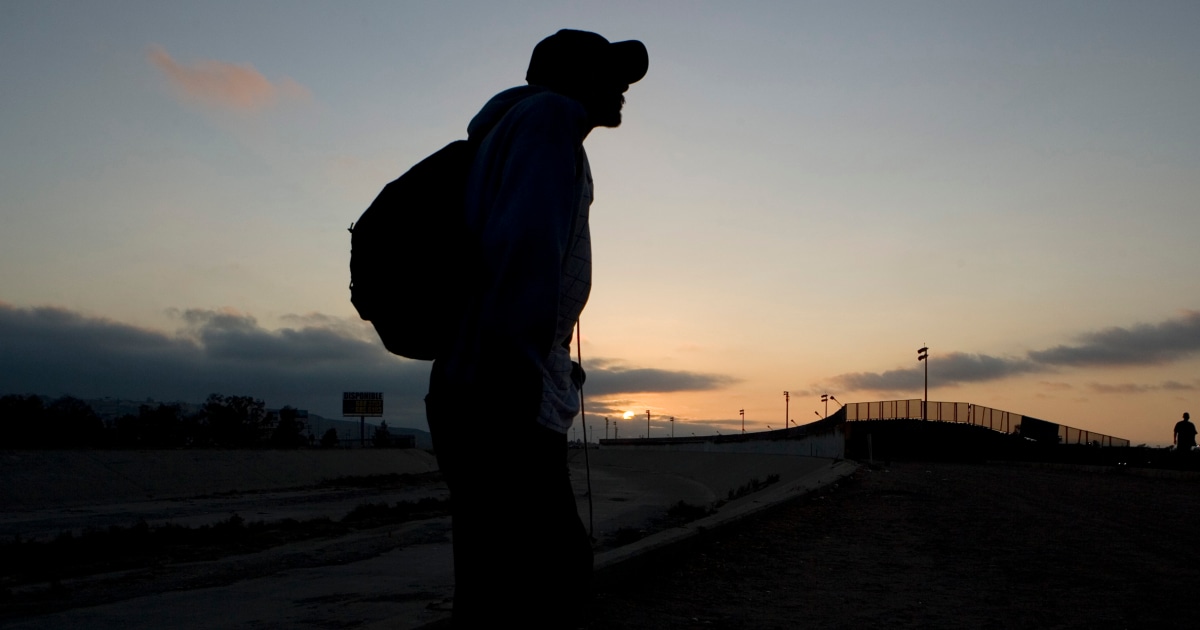By Edgar H. Clemente
Associated Press
TAPACHULA, Mexico (AP) — About 500 migrants from Central America, Venezuela and elsewhere faced off with local police, National Guard and immigration agents in Tapachula, Chiapas, in the first massive march this year.
The migrants described the march as a traditional annual protest related to Holy Week.
As in a procession, those who went to the front carried a white cross, as has happened in previous years.
[They fear an 'avalanche of immigrants' if Title 42 ends]
However, this year the protest took place two weeks before that religious celebration
and some participants stated that they would try to reach the border with the United States in a caravan.
Migrants try to cross a National Guard blockade in Tapachula, Chiapas, on April 1, 2022. Edgar H. Clemente / AP
While facing the National Guard and agents of the National Migration Institute,
the migrants used the wooden cross they were carrying as a battering ram to break the ranks of the authorities
, although it later broke during the struggle.
The officers, who had riot shields, batons and what appeared to be an irritant spray, detained several protesters.
The two sides exchanged blows and many migrants left their backpacks in the melee.
Some managed to make their way and disappeared among the dirt roads, but most took refuge in a church located a few kilometers from Tapachula.
[These are the new measures to streamline immigration procedures]
The migrants left this city near Mexico's border with Guatemala early Friday morning.
Many of them have complained for months that they have been confined to Tapachula while they await the slow processing of their asylum cases and that they cannot find work in Chiapas to support their families.
“They practically have us prisoners.
They do not allow us to leave this state because we are not regularized here,” complained the Venezuelan migrant Noreydi Chávez.
The Cuban migrant rescued in the Florida Keys will be able to remain in the United States.
March 25, 202200:55
Reynaldo Bello, a migrant from Peru, joined the march with his wife and baby because the family had been living in a park and going hungry while waiting for their immigration papers to be processed.
The march occurs after the Joe Biden Administration announced that it would end Title 42, a policy that allows asylum seekers to be returned on the grounds of protecting the country from the coronavirus pandemic.
There have been more than 1.7 million migrant expulsions under this policy, which builds on an old disused public health law that the Trump Administration invoked in March 2020 to stop migrants arriving at the border.
[Ukrainian Refugees at US-Mexico Border Denounce Bureaucracy to Apply for Asylum]
The Centers for Disease Control (CDC) said on Friday that they would end it as of May 23.
The CDC had extended the duration of Title 42 to this end of that week due to the rebound in coronavirus cases brought by the omicron variant.
Three children saved from drowning in the Rio Grande as the border prepares for a new wave of migration
March 31, 202201:54
Luis García Villagrán, a migration activist with the Center for Human Dignification, said Mexican immigration authorities largely closed most visa processes in Tapachula and
told migrants that the only way to regularize their stay in Mexico was through the much longer procedure of applying for asylum or refugee status.
In January, Mexican authorities broke up a smaller migrant march in this same area of the country's southeast.
[The Immigration Service created a fake university to detect visa fraud. This is how it affected young migrants]
These marches have been significantly smaller than the 2018 and 2019 caravans, which brought thousands of migrants to the US-Mexico border.
The caravans began several years ago as a way to safely move migrants who had no money to pay human smugglers who demand sums of up to $10,000 per person.
Recently, however, Guatemala and Mexico have responded more aggressively in trying to stop the caravans.



/cloudfront-eu-central-1.images.arcpublishing.com/prisa/CQSZWCMFFEISWLLJKA76I3TGKA.jpg)





